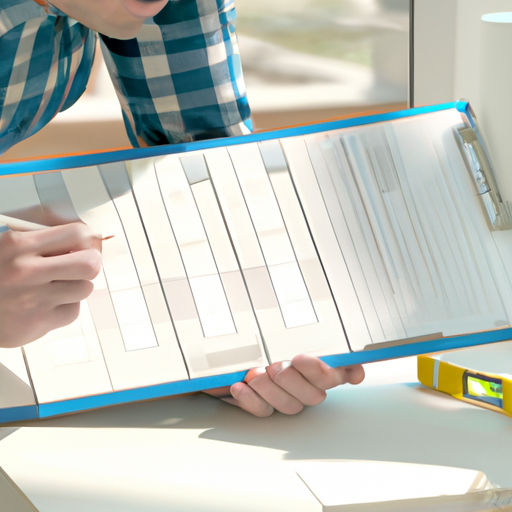Factors Affecting the Cost of a New Roof Installation
Factors Affecting the Cost of a New Roof Installation
When it comes to installing a new roof, one of the first questions that homeowners often ask is, “How much will it cost?” The answer to this question can vary greatly depending on a number of factors. In this article, we will explore some of the key factors that can affect the cost of a new roof installation.
One of the most significant factors that can impact the cost of a new roof is the size of the roof itself. It stands to reason that a larger roof will require more materials and labor, resulting in a higher overall cost. Additionally, the complexity of the roof’s design can also play a role in determining the cost. Roofs with multiple angles, dormers, or other architectural features may require more time and expertise to install, which can drive up the price.
Another factor that can affect the cost of a new roof installation is the type of roofing material chosen. There are a wide variety of roofing materials available, each with its own unique characteristics and price points. Asphalt shingles, for example, are a popular and affordable option, while metal roofs tend to be more expensive but offer greater durability and longevity. Other materials, such as slate or tile, can be even more costly due to their premium quality and aesthetic appeal.
The condition of the existing roof can also impact the cost of a new roof installation. If the current roof is in poor condition, it may need to be completely removed and replaced, which can add to the overall cost. On the other hand, if the existing roof is in relatively good shape, it may be possible to install the new roof over the old one, resulting in cost savings. However, this approach may not be suitable for all types of roofing materials or if there are underlying issues that need to be addressed.
The location of the home can also influence the cost of a new roof installation. Labor and material costs can vary significantly from one region to another, so homeowners in certain areas may need to budget more for their new roof. Additionally, local building codes and regulations can also impact the cost, as certain requirements may need to be met during the installation process.
Lastly, the choice of contractor can have a significant impact on the cost of a new roof installation. Different contractors may have different pricing structures and levels of expertise, so it is important to do thorough research and obtain multiple quotes before making a decision. While it may be tempting to choose the lowest bid, it is crucial to consider the contractor’s reputation, experience, and the quality of their workmanship.
In conclusion, there are several factors that can affect the cost of a new roof installation. The size and complexity of the roof, the type of roofing material chosen, the condition of the existing roof, the location of the home, and the choice of contractor all play a role in determining the final cost. By considering these factors and obtaining multiple quotes, homeowners can make an informed decision and ensure that they are getting the best value for their investment in a new roof.
Understanding Different Roofing Materials and Their Costs

How much will my new roof cost?
Understanding Different Roofing Materials and Their Costs
When it comes to replacing your roof, one of the most important factors to consider is the cost. The price of a new roof can vary greatly depending on the materials used, the size of your roof, and the complexity of the installation. In this article, we will explore different roofing materials and their costs to help you make an informed decision.
Asphalt shingles are the most common roofing material used in residential properties. They are affordable and come in a wide range of colors and styles. The cost of asphalt shingles can vary depending on the quality and brand, but on average, you can expect to pay between $1.50 and $5 per square foot. Keep in mind that the lifespan of asphalt shingles is typically around 20 to 30 years.
If you are looking for a more durable and long-lasting option, metal roofing might be the right choice for you. Metal roofs are known for their strength and resistance to extreme weather conditions. They can last up to 50 years or more, making them a cost-effective option in the long run. However, metal roofing can be more expensive upfront, with prices ranging from $5 to $12 per square foot.
For those who prefer a natural and eco-friendly option, consider a wood shake or shingle roof. Wood roofs have a unique and rustic appearance that can enhance the aesthetic appeal of your home. However, they require regular maintenance and are more susceptible to fire and rot. The cost of wood shake or shingle roofs can range from $6 to $12 per square foot.
If you are looking for a high-end and luxurious option, slate roofing might be the perfect choice. Slate roofs are known for their elegance and durability, with a lifespan of up to 100 years or more. However, they are also the most expensive roofing material, with prices ranging from $15 to $30 per square foot. Additionally, slate roofs require specialized installation and maintenance, which can further increase the overall cost.
Another option to consider is clay or concrete tiles. These roofing materials are popular in Mediterranean and Spanish-style homes due to their distinctive appearance. Clay and concrete tiles are durable and can last up to 50 years or more. However, they can be heavy and require additional structural support. The cost of clay or concrete tiles can range from $10 to $20 per square foot.
In addition to the material itself, it is important to consider the cost of installation. The complexity of the installation, the size of your roof, and the location of your home can all affect the overall cost. It is recommended to get multiple quotes from reputable roofing contractors to compare prices and ensure you are getting a fair deal.
In conclusion, the cost of a new roof can vary greatly depending on the materials used and the complexity of the installation. Asphalt shingles are the most affordable option, while slate roofs are the most expensive. Metal roofing offers durability and longevity, while wood shake or shingle roofs provide a natural and rustic look. Clay or concrete tiles are popular for their distinctive appearance. Consider your budget, aesthetic preferences, and long-term goals when choosing the right roofing material for your home.
Tips for Budgeting and Financing Your New Roof Project
How much will my new roof cost?
When it comes to budgeting and financing your new roof project, there are several factors to consider. The cost of a new roof can vary greatly depending on the size of your home, the materials used, and the complexity of the installation. In this article, we will provide you with some tips to help you budget for your new roof and explore financing options that may be available to you.
First and foremost, it is important to get an accurate estimate for the cost of your new roof. This can be done by contacting several reputable roofing contractors in your area and requesting quotes. Be sure to provide them with as much information as possible, including the size of your home, the type of roofing material you prefer, and any specific requirements or concerns you may have. By obtaining multiple quotes, you can compare prices and choose the contractor that offers the best value for your money.
Once you have an estimate for the cost of your new roof, it is time to start budgeting. It is recommended to set aside a contingency fund of at least 10% of the total cost to account for any unexpected expenses that may arise during the project. Additionally, consider any other costs that may be associated with the installation, such as the removal and disposal of the old roof, permits, and any necessary repairs to the underlying structure.
If the cost of a new roof is beyond your current budget, there are financing options available to help you spread out the expense over time. One option is to take out a home improvement loan. These loans are specifically designed for funding home improvement projects and typically offer competitive interest rates. Another option is to use a credit card with a low or zero-interest introductory period. This can be a good option if you are confident in your ability to pay off the balance before the interest rate increases.
Some roofing contractors may also offer financing options directly. This can be a convenient option as it allows you to finance the cost of your new roof through the same company that will be installing it. However, it is important to carefully review the terms and conditions of any financing agreement to ensure that you are getting a fair deal.
In addition to budgeting and financing, it is also important to consider the long-term cost savings that a new roof can provide. A well-insulated and properly installed roof can help to reduce energy costs by improving the overall efficiency of your home. Additionally, some roofing materials, such as metal or tile, have a longer lifespan than traditional asphalt shingles, which can save you money on future repairs and replacements.
In conclusion, budgeting and financing your new roof project requires careful consideration of several factors. Obtaining multiple quotes, setting aside a contingency fund, and exploring financing options can help you to effectively manage the cost of your new roof. Additionally, considering the long-term cost savings can further justify the investment. By taking the time to plan and budget, you can ensure that your new roof project is a success.
